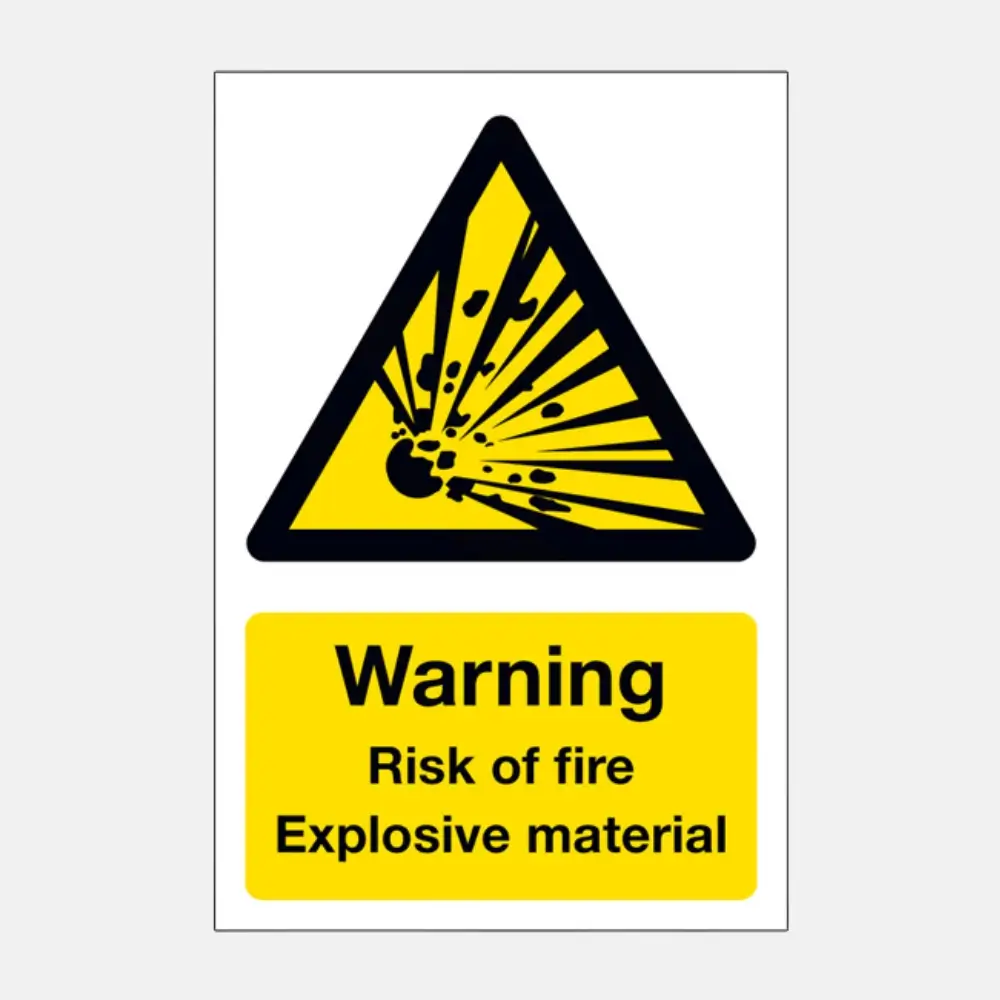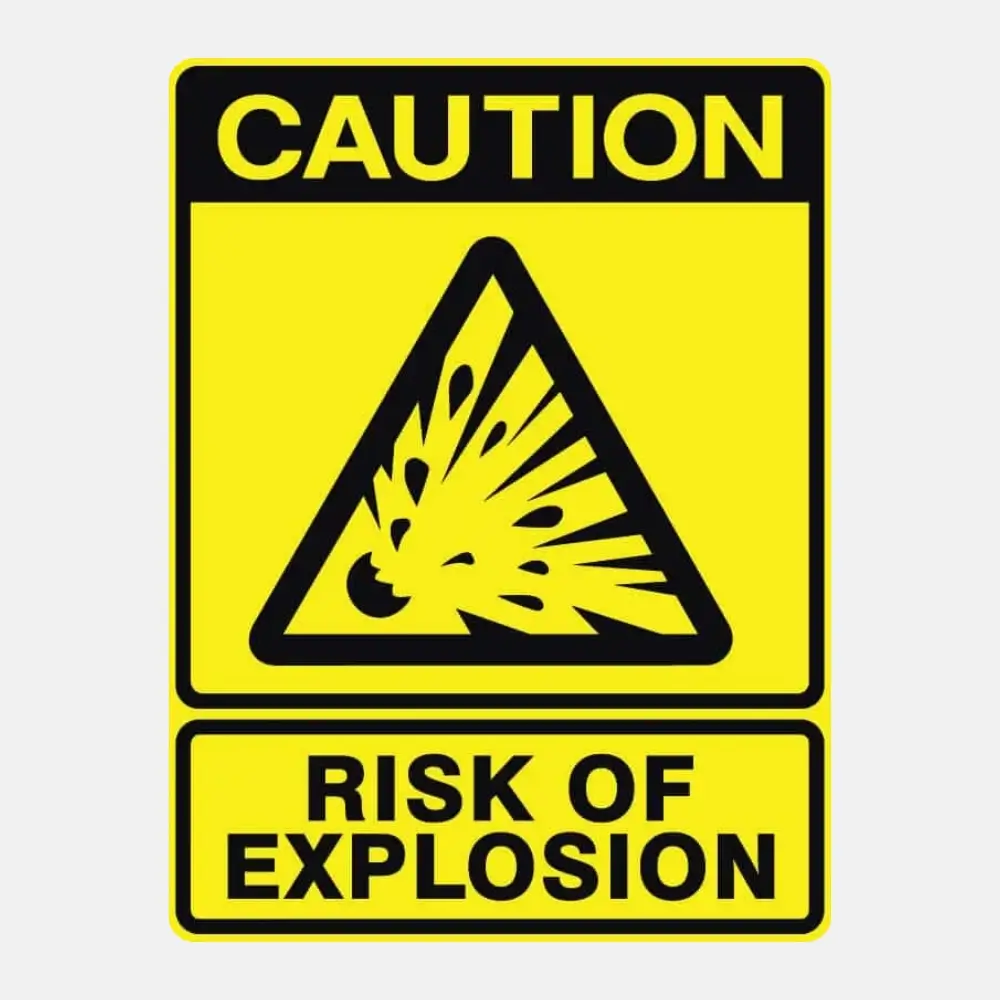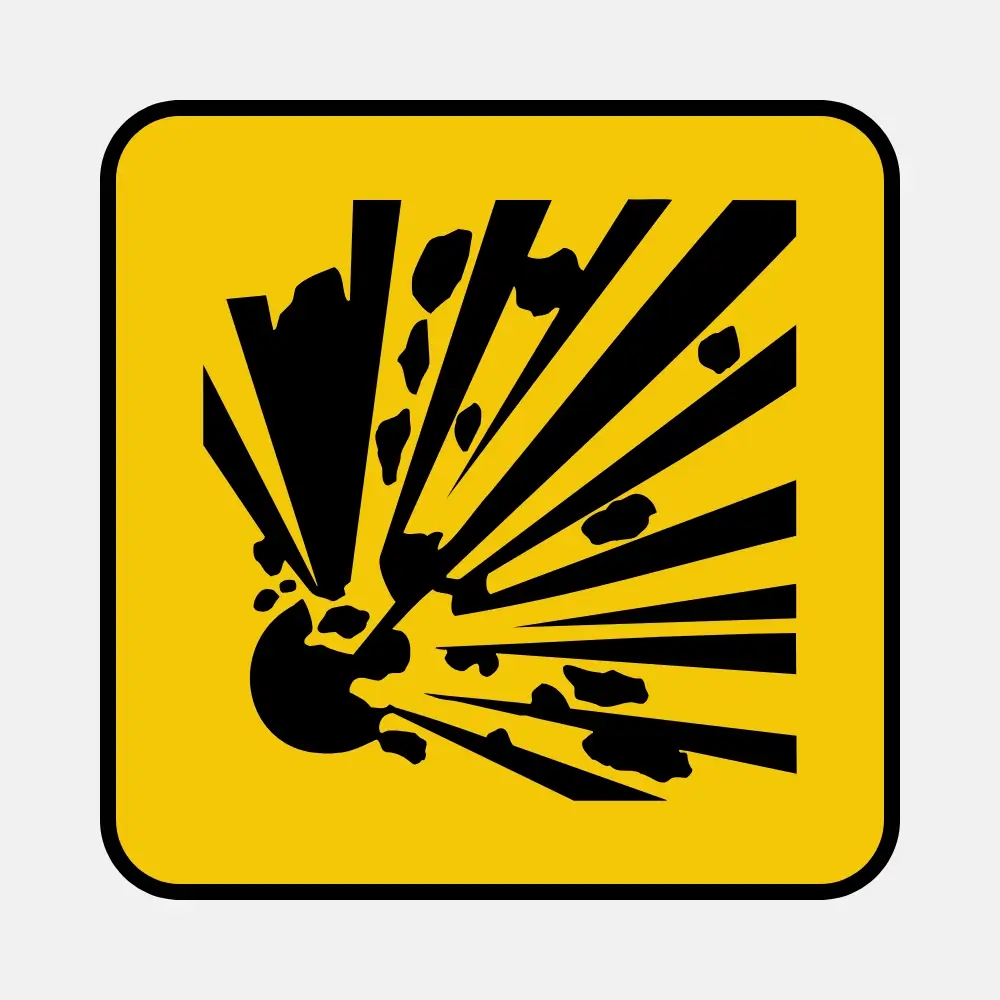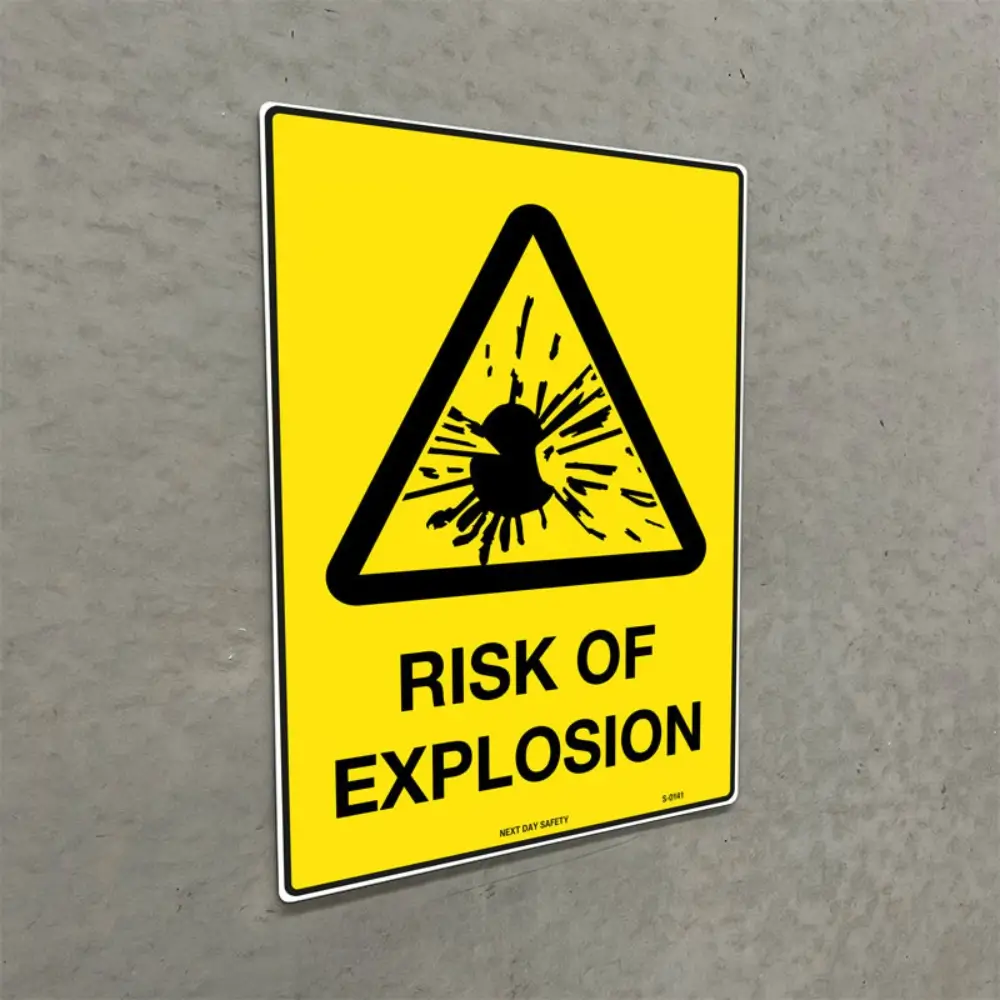The explosion symbol is a universally recognized hazard pictogram used to communicate critical safety information about explosive materials. This symbol is part of the Globally Harmonized System of Classification and Labelling of Chemicals (GHS), ensuring a standardized approach to hazard identification worldwide. Understanding this symbol’s importance can help prevent accidents, protect lives, and ensure regulatory compliance.
What is the Explosion Symbol?
The explosion symbol is typically represented as an exploding bomb inside a red diamond. This visual cue alerts individuals to the potential explosive or unstable nature of the material or chemical it labels. The GHS uses this symbol to classify and label substances that pose a significant risk of explosion or self-reactive behavior under specific conditions.
Materials Associated with the Explosion Symbol
Substances labeled with the explosion symbol fall into the following categories:
- Explosives: Chemicals or mixtures capable of a rapid and violent release of pressure, gas, and heat when triggered by an external force like shock, heat, or friction. Examples include fireworks and certain industrial-grade blasting agents.
- Self-Reactive Substances and Mixtures: Chemicals prone to vigorous decomposition even without the presence of oxygen. These are often sensitive to temperature or contamination.
- Organic Peroxides: Compounds containing the -O-O- group, which may become unstable and highly reactive, leading to explosive decomposition in specific conditions.
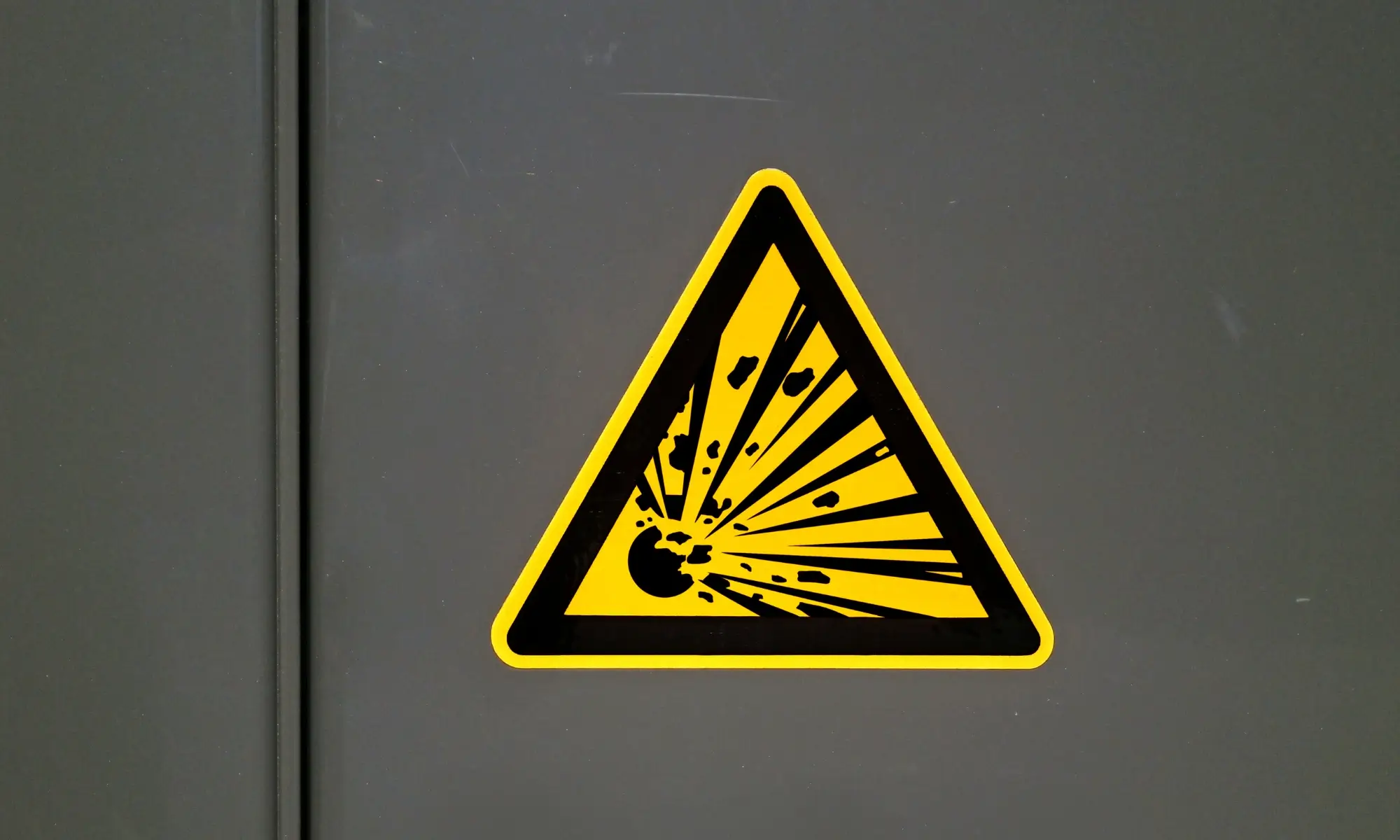
Why the Explosion Symbol Matters?
The explosion symbol plays a critical role in hazard communication and safety management. It signifies the presence of substances or mixtures that can cause violent explosions or reactive incidents if improperly handled. Here’s why this symbol is essential:
1. Ensures Workplace Safety
The explosion symbol clearly warns workers about materials that can cause explosions under certain conditions. It prompts workers to adopt safety measures such as wearing personal protective equipment (PPE) and following handling guidelines. The symbol significantly reduces risks in workplaces handling hazardous materials by ensuring proper storage and use.
Key Points:
- Warns of explosive hazards in the workplace.
- Encourages the use of PPE and safe handling protocols.
- Reduces risks associated with improper storage and usage.
2. Aids Regulatory Compliance
Proper labeling with the explosion symbol ensures adherence to safety regulations such as GHS and OSHA standards. These regulations mandate clear hazard communication to protect workers and the public. Failure to comply can lead to fines, legal issues, and operational disruptions, making compliance essential for businesses.
Key Points:
- Ensures compliance with international and local safety regulations.
- Mandates clear hazard communication for safety.
- Helps avoid legal and financial consequences of non-compliance.
3. Protects Lives and Property
The explosion symbol helps prevent catastrophic events by identifying materials that require special precautions. Accidental explosions can cause severe injuries, loss of life, and destruction of property. Recognizing this symbol ensures materials are handled correctly, safeguarding both people and assets.
Key Points:
- Identifies materials requiring special handling to prevent accidents.
- Protects workers and the public from injuries or fatalities.
- Prevents property damage caused by explosions.
4. Supports Emergency Preparedness
In emergencies, the explosion symbol provides critical information for responders about the type of hazard involved. This enables them to take targeted actions, such as isolating the material or evacuating the area. Proper labeling ensures a swift and effective response, minimizing harm during incidents.
Key Points:
- Helps emergency teams identify explosive hazards quickly.
- Guides actions like isolation and evacuation.
- Reduces damage and risk during accidents.
5. Safeguards the Environment
If mishandled, explosive materials can release toxic substances, contaminate soil, or harm ecosystems. The explosion symbol highlights the need for careful storage, transportation, and disposal. This ensures that materials are managed responsibly, reducing their environmental impact.
Key Points:
- Prevents environmental damage caused by explosive substances.
- Promotes safe disposal and transportation practices.
- Minimizes risks to ecosystems and public health.
6. Promotes Awareness and Training
The explosion symbol is an educational tool that encourages awareness about the dangers of certain chemicals. It supports training initiatives for workers and handlers, ensuring they understand how to manage these materials safely. Increased awareness leads to better safety practices and fewer accidents.
Key Points:
- Educates workers about the potential hazards of explosive materials.
- Encourages training in safe handling and storage practices.
- Promotes a culture of safety and awareness in workplaces.
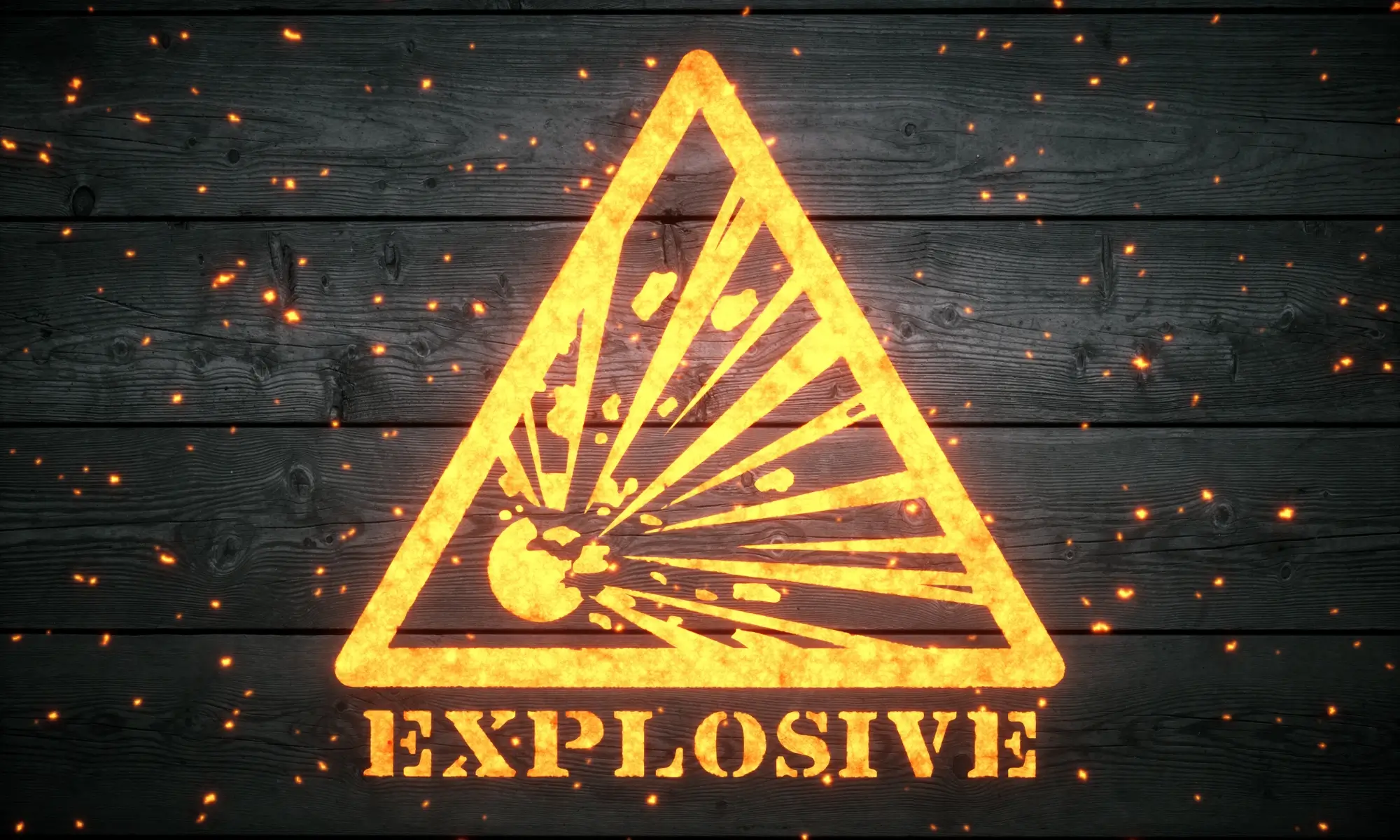
How to Handle Materials with the Explosion Symbol
Materials marked with the explosion symbol require careful handling, storage, and disposal to ensure safety. These substances are often highly reactive, sensitive to temperature or pressure, and may explode under the wrong conditions. Follow these guidelines to minimize risks and protect workers, property, and the environment.
1. Proper Storage
Explosive materials should always be stored in designated, secure areas that meet safety regulations. The storage location must be cool, dry, and well-ventilated to prevent triggering reactions. Avoid placing explosive substances near incompatible chemicals, ignition sources, or direct sunlight.
Key Points:
- Store in cool, dry, and ventilated areas.
- Keep away from ignition sources and sunlight.
- Separate from incompatible substances.
2. Safe Handling
When working with explosive materials, always wear the recommended personal protective equipment (PPE), such as gloves, goggles, and flame-resistant clothing. Handle the materials gently to avoid friction, shock, or impact. To reduce risks, use non-sparking tools designed for explosive substances.
Key Points:
- Wear appropriate PPE during handling.
- Handle gently to prevent shock or impact.
- Use non-sparking tools for safer operations.
3. Risk Assessment
Conduct regular risk assessments to evaluate potential hazards associated with explosive materials. Assess factors like storage conditions, handling procedures, and emergency preparedness. Address vulnerabilities by implementing stricter controls or upgrading safety protocols.
Key Points:
- Perform regular risk assessments.
- Evaluate storage and handling conditions.
- Implement safety measures to address vulnerabilities.
4. Emergency Preparedness
Establish and train workers on emergency protocols to prepare for accidents. Keep firefighting equipment nearby, such as extinguishers or sand, and ensure it’s maintained and operational. Develop clear evacuation routes and communicate them to all personnel.
Key Points:
- Train workers in emergency procedures.
- Keep firefighting equipment accessible.
- Ensure clear evacuation routes are established.
5. Transportation Guidelines
Follow regulations for transporting explosive materials, such as using specialized containers and vehicles. Label all containers clearly with the explosion symbol and required hazard information. Ensure that only authorized personnel handle transportation.
Key Points:
- Use specialized containers and vehicles.
- Label containers with the explosion symbol.
- Limit handling to trained, authorized personnel.
6. Proper Disposal
To prevent accidents or environmental harm, dispose of explosive materials according to local regulations and guidelines. Work with licensed waste disposal companies for hazardous materials, and never dispose of them in regular trash or drains.
Key Points:
- Follow local regulations for disposal.
- Use licensed waste disposal services.
- Avoid improper disposal methods like drains or trash.
Handling materials with the explosion symbol requires strict adherence to safety protocols and regulations. Individuals and organizations can ensure a safe environment while mitigating risks associated with explosive substances by prioritizing proper storage, handling, risk assessment, emergency preparedness, transportation, and disposal.
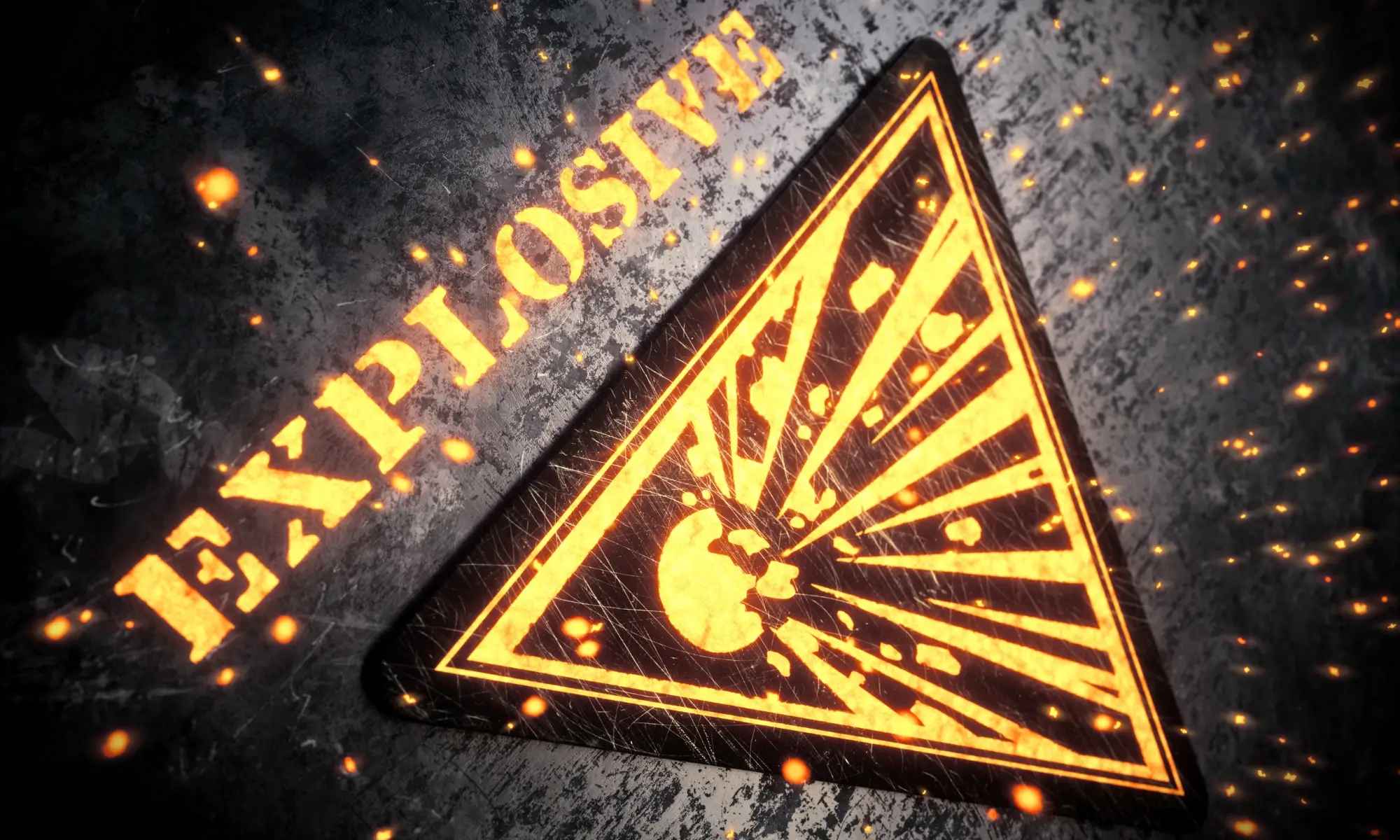
Common Industries Using Explosive Materials
Explosive materials play a critical role in several industries, where their properties are harnessed for essential processes. While their use offers significant benefits, these industries must adhere to strict safety protocols to mitigate risks and ensure safe operations. Below is an overview of industries commonly working with explosive materials.
1. Mining and Quarrying
Explosives are a cornerstone of the mining and quarrying industry, where they are used to break apart rocks and access valuable minerals. Controlled detonations help efficiently extract resources like coal, metal ores, and aggregates. This reduces manual labor and accelerates production timelines.
Key Points:
- Used for blasting rocks to extract minerals.
- Essential for accessing coal, metal ores, and aggregates.
- Enables efficient large-scale resource extraction.
2. Construction and Demolition
Explosives are utilized in construction for tasks such as tunneling, road construction, and foundation excavation. In demolition, they enable the safe and controlled dismantling of buildings and structures. Properly timed blasts ensure precision and minimize environmental impact.
Key Points:
- Used for tunneling, excavation, and foundation work.
- Enables controlled demolition of buildings.
- Ensures precision in construction and deconstruction projects.
3. Defense and Military
Explosives are central to the defense and military industry and are used to develop weapons, ammunition, and other explosive devices. From grenades to missiles, controlled explosives play a critical role in national security operations and testing.
Key Points:
- Integral to ammunition and weaponry development.
- Used in testing and training operations.
- Supports national security and defense strategies.
4. Fireworks and Entertainment
The fireworks industry relies on explosives to create visually stunning displays for celebrations and events. Pyrotechnics are also used in movies, theater, and concerts to simulate explosions or add dramatic effects, requiring precise handling and expertise.
Key Points:
- Essential for fireworks and celebration displays.
- Used in pyrotechnics for movies, theater, and concerts.
- Requires specialized handling for safety and precision.
5. Oil and Gas Industry
Explosives are employed in the oil and gas sector to enhance extraction processes. For example, they are used in seismic exploration to create shock waves that map underground reservoirs or in perforation charges to improve oil flow in drilling operations.
Key Points:
- Used in seismic exploration for mapping reservoirs.
- Enhances drilling and oil flow efficiency.
- Aids in locating and extracting oil and gas reserves.
6. Research and Development
Laboratories and research facilities use small quantities of explosives for scientific studies and testing. These include experiments in material science, aerodynamics, and chemical engineering, where controlled reactions provide valuable data for innovation.
Key Points:
- Used in material science and chemical experiments.
- Supports studies in aerodynamics and engineering.
- Drives innovation through controlled testing and research.
Explosive materials are indispensable in various industries, from mining and construction to entertainment and scientific research. While their applications offer efficiency and innovation, these industries must implement robust safety measures and adhere to regulatory guidelines to minimize risks and ensure safe operations. Understanding their role and associated precautions is vital for both industry professionals and the general public.

Legal and Regulatory Implications
Handling and managing explosive materials comes with strict legal and regulatory obligations to ensure safety, protect the environment, and prevent misuse. Non-compliance with these regulations can result in severe penalties, including hefty fines, imprisonment, operational shutdowns, or reputational damage. Below is an outline of the key legal and regulatory implications.
1. Compliance with International Standards
Organizations must adhere to global safety frameworks such as the Globally Harmonized System of Classification and Labelling of Chemicals (GHS). These standards mandate proper labeling, classification, and hazard communication to ensure safe handling and transportation of explosive materials worldwide.
Key Points:
- GHS standards ensure universal safety compliance.
- Mandates proper classification and labeling of materials.
- Facilitates international transport and trade safely.
2. National Safety Regulations
Different countries enforce their own safety standards to regulate the use of explosive materials. For example, in the United States, the Occupational Safety and Health Administration (OSHA) and Bureau of Alcohol, Tobacco, Firearms and Explosives (ATF) oversee the safe handling and storage of explosive substances.
Key Points:
- OSHA regulates workplace safety for explosive materials.
- ATF oversees licensing and monitoring of explosives in the U.S.
- National frameworks ensure localized safety compliance.
3. Transportation Regulations
The transportation of explosives is governed by stringent laws to prevent accidents during transit. These include requirements for specialized containers, secure packaging, clear hazard labeling, and trained personnel. Internationally, the International Air Transport Association (IATA) Dangerous Goods Regulations and the United Nations Model Regulations guide safe transport practices.
Key Points:
- Specialized containers and secure packaging required.
- Clear hazard labeling is mandatory during transit.
- Adherence to international and local transport regulations.
4. Licensing and Permits
Companies and individuals working with explosives are often required to obtain licenses or permits from regulatory authorities. This ensures that only trained and authorized personnel handle explosive materials, minimizing the risks of accidents or misuse.
Key Points:
- Licenses are mandatory for storage, handling, and transport.
- Permits ensure proper training and authorization.
- Reduces risks of unauthorized or illegal usage.
5. Environmental Compliance
Improper disposal or mishandling of explosives can lead to significant environmental damage. Regulatory bodies enforce guidelines for the safe disposal of hazardous materials to prevent soil, water, and air contamination. Non-compliance can lead to legal action and environmental restoration costs.
Key Points:
- Mandates safe disposal to prevent environmental harm.
- Strict penalties for improper handling or contamination.
- Encourages sustainable practices in explosive management.
6. Penalties for Non-Compliance
Failing to comply with regulations can result in severe consequences, including financial penalties, criminal charges, or suspension of operations. For instance, mishandling explosive materials may lead to fines, imprisonment, or revocation of licenses, depending on the severity of the violation.
Key Points:
- Financial penalties for safety violations.
- Criminal charges for gross negligence or misuse.
- Loss of licenses or operational shutdowns for repeat offenses.
The legal and regulatory implications of handling explosive materials underscore the importance of compliance to protect workers, the public, and the environment. Adhering to international and national standards reduces risks and fosters a culture of responsibility and safety.
Non-compliance is not just a legal issue—it can lead to significant operational, financial, and reputational consequences. Organizations must prioritize proper training, labeling, and adherence to regulatory frameworks to ensure safety and prevent accidents.
Conclusion
The explosion symbol is more than just a label—it’s a critical safety tool that saves lives and prevents environmental and property damage. By understanding its meaning and adhering to the associated safety guidelines, individuals and organizations can create safer environments and comply with international safety standards.
Recognize the symbol, respect its warning, and take the necessary precautions. Safety begins with awareness, and the explosion symbol serves as a vital reminder of the importance of caution and preparedness.



